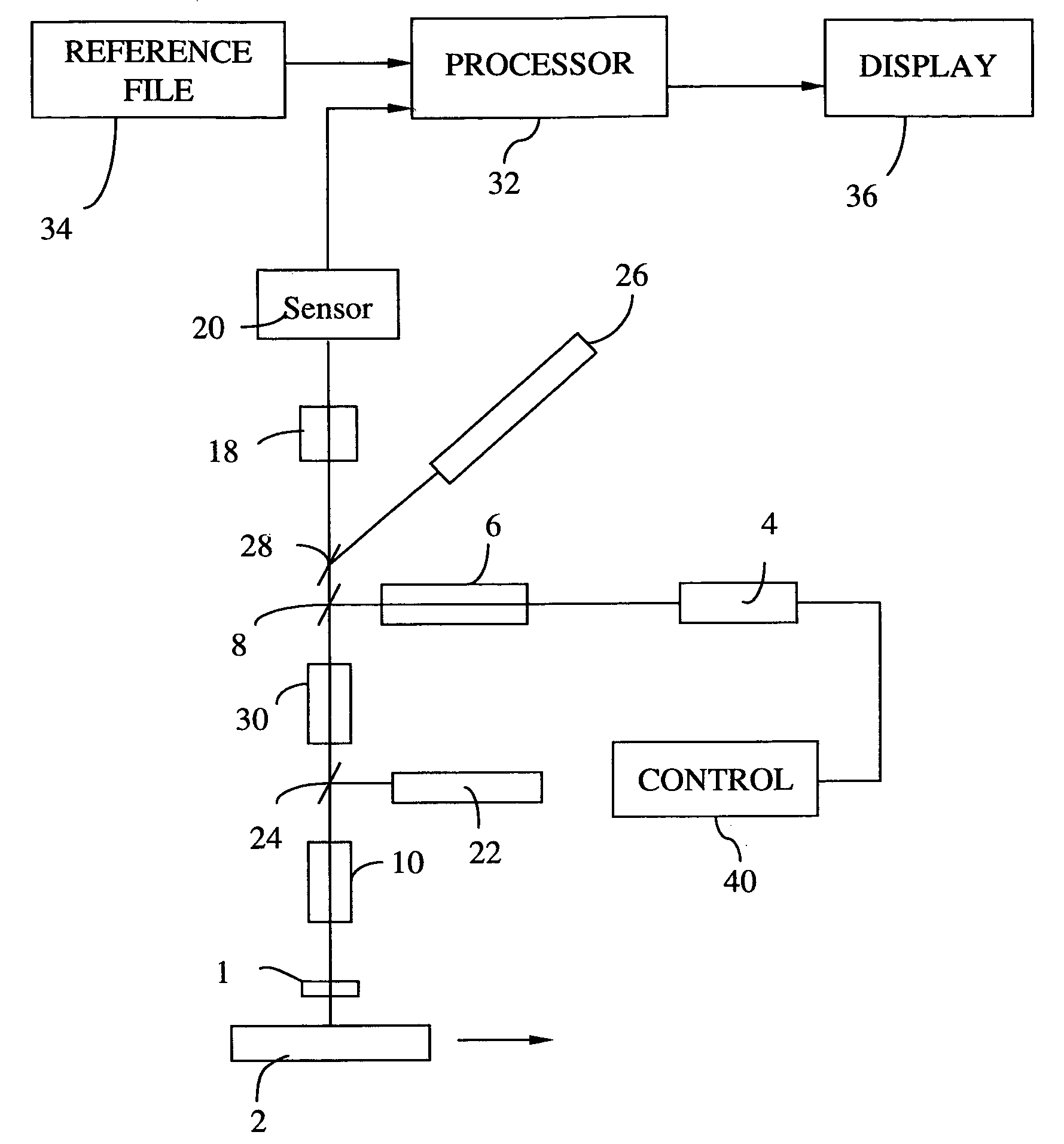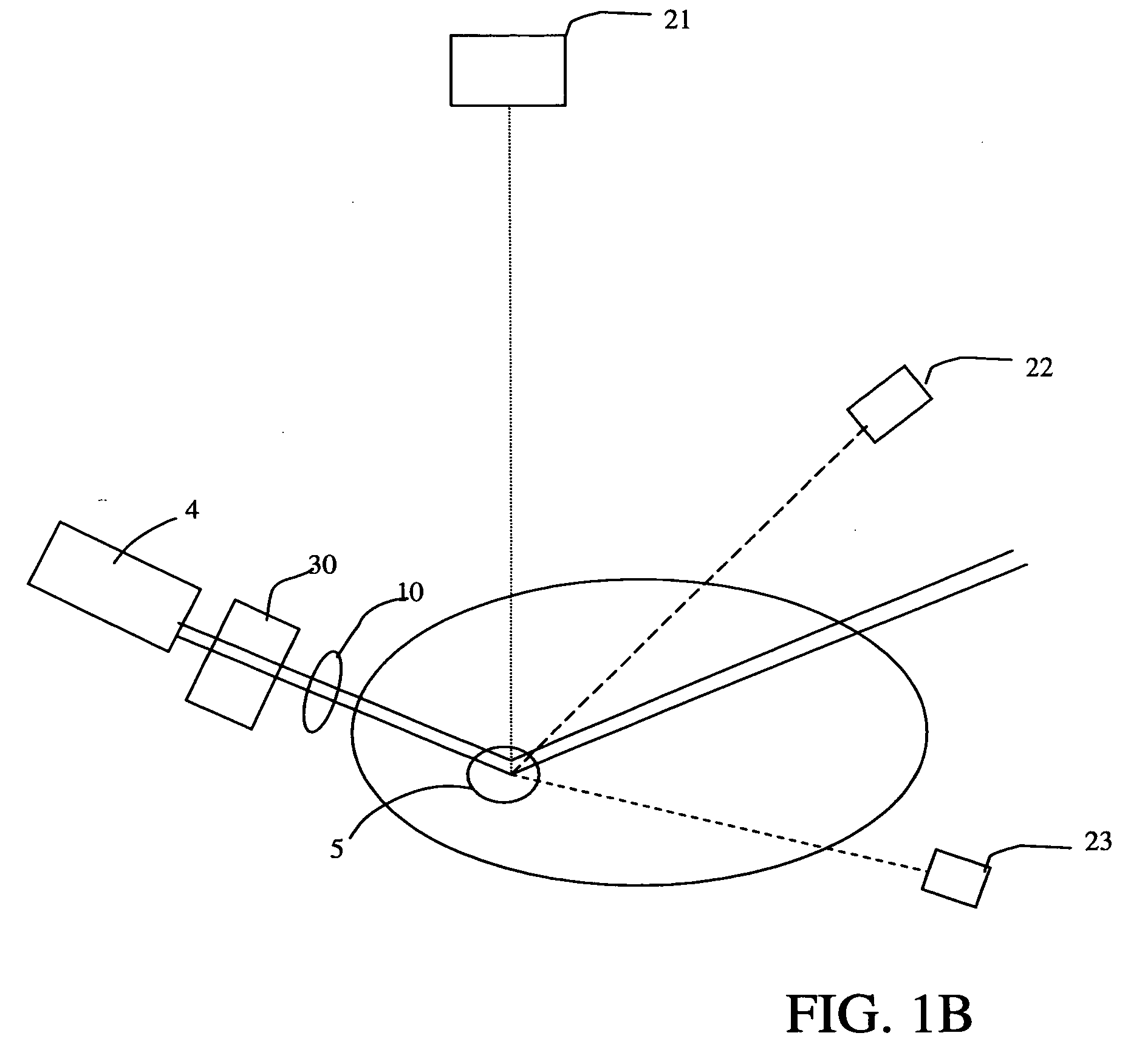Method and apparatus for article inspection including speckle reduction
a technology of article inspection and speckle reduction, which is applied in the field of inspection of articles, can solve the problems of reducing the yield of the fabrication line, false alarms, and insufficient brightness, and achieves the effects of reducing or eliminating speckle, reducing or eliminating the cost of being convenient in introducing large optical path length variations
- Summary
- Abstract
- Description
- Claims
- Application Information
AI Technical Summary
Benefits of technology
Problems solved by technology
Method used
Image
Examples
first embodiment
[0054] According to FIG. 2A, the coherence reduction optical apparatus 30 includes two optical fiber bundles 301 and 302, each having a predetermined number of optical fibers 304, 305. The bundles may have the same number of fibers, or different numbers of fibers. There also may be more than two bundles provided. The optical bundles 301 and 302 are sequentially positioned along the path of the imaging beam I, bundle 301 being positioned ahead of bundle 302 and having an input for receiving the imaging beam I and an output adjacent to an input of the second bundle 302. (For ease of description, the two bundles 301, 302 are shown at a slight angle with respect to each other, though in operation they may be aligned along an axis.).
[0055] The optical fibers 304 and 305 are of a similar type known in the art, preferably having predetermined parameters, such as refractive index and cladding, although they could also have different refractive indices or different claddings. The fibers 304 ...
second embodiment
[0064] In the present invention shown in FIG. 5, the coherence reduction optical apparatus 30 is constituted by an integrating sphere 311 disposed along the path of the imaging beam I. The integrating sphere 311 includes an entrance aperture 312 and an exit aperture 313. The aperture 312 has preferably a smaller diameter than the aperture 313. The aperture 312 is positioned so as to receive the imaging beam I. The integrating sphere 311 includes a non-absorbing inner surface made out of a non-absorbing material, preferably magnesium oxide (MgO), for better reflecting the imaging beam I. Other suitable reflective coatings also may be used.
[0065] After the imaging beam I is reflected within the integrating sphere 311, a reflected beam exits the sphere through the aperture 313. More specifically, the beam exiting the aperture 313 is a collection of reflected beams inside the integration sphere, each beam travelling a different distance from other beams. As a result, the collection of t...
third embodiment
[0069] As shown in FIG. 7, the coherence reduction optical apparatus 30 of present invention is constituted by a first grating 321 and a second grating 322, positioned along the path of the imaging beam I. The gratings 321, 322 in the embodiment are diffraction gratings, but it is to be understood that reflection gratings could be used with the same results. The gratings 321, 322 are preferably identical, having predetermined pitch A, wavelength λ, and first diffraction order, although gratings with different pitches and other properties could be used as well.
[0070] In operation, the imaging beam I hits the surface of grating 321 at a predetermined angle θi, and is diffracted at an angle θo. If the imaging beam I could be expanded to have a diameter D, as seen in FIG. 7, then an optical path difference (OPD) achieved between the two edges of the imaging beam can be calculated with the formula: OPD=Dtanθi+Dsinθo / cosθi; The diffraction relation is sinθo=λ / Λ−cosθi. The diffracted light...
PUM
| Property | Measurement | Unit |
|---|---|---|
| optical coherence length | aaaaa | aaaaa |
| length | aaaaa | aaaaa |
| length | aaaaa | aaaaa |
Abstract
Description
Claims
Application Information
 Login to View More
Login to View More - R&D
- Intellectual Property
- Life Sciences
- Materials
- Tech Scout
- Unparalleled Data Quality
- Higher Quality Content
- 60% Fewer Hallucinations
Browse by: Latest US Patents, China's latest patents, Technical Efficacy Thesaurus, Application Domain, Technology Topic, Popular Technical Reports.
© 2025 PatSnap. All rights reserved.Legal|Privacy policy|Modern Slavery Act Transparency Statement|Sitemap|About US| Contact US: help@patsnap.com



